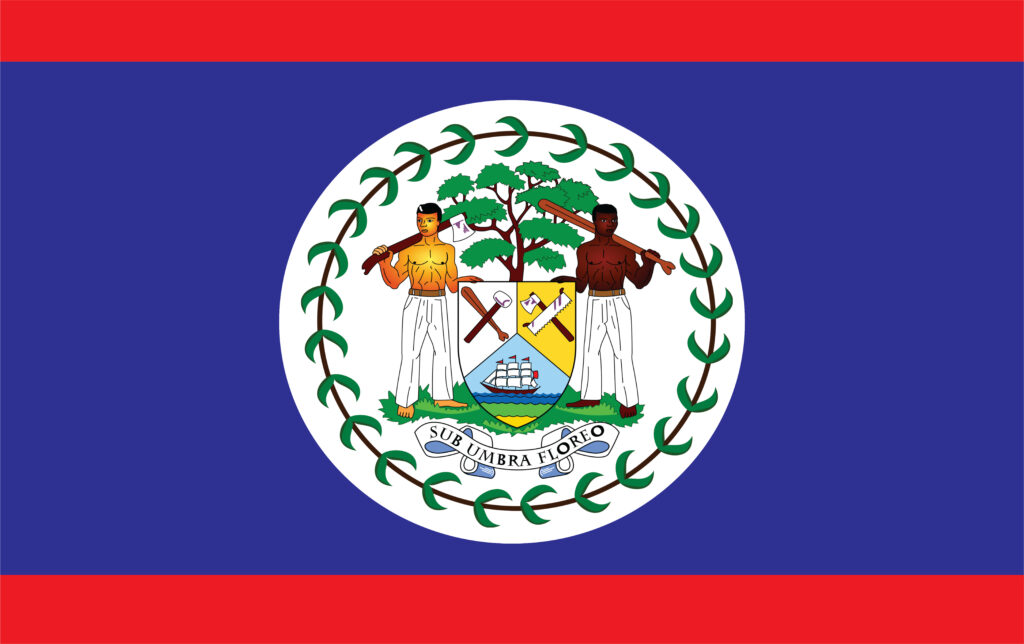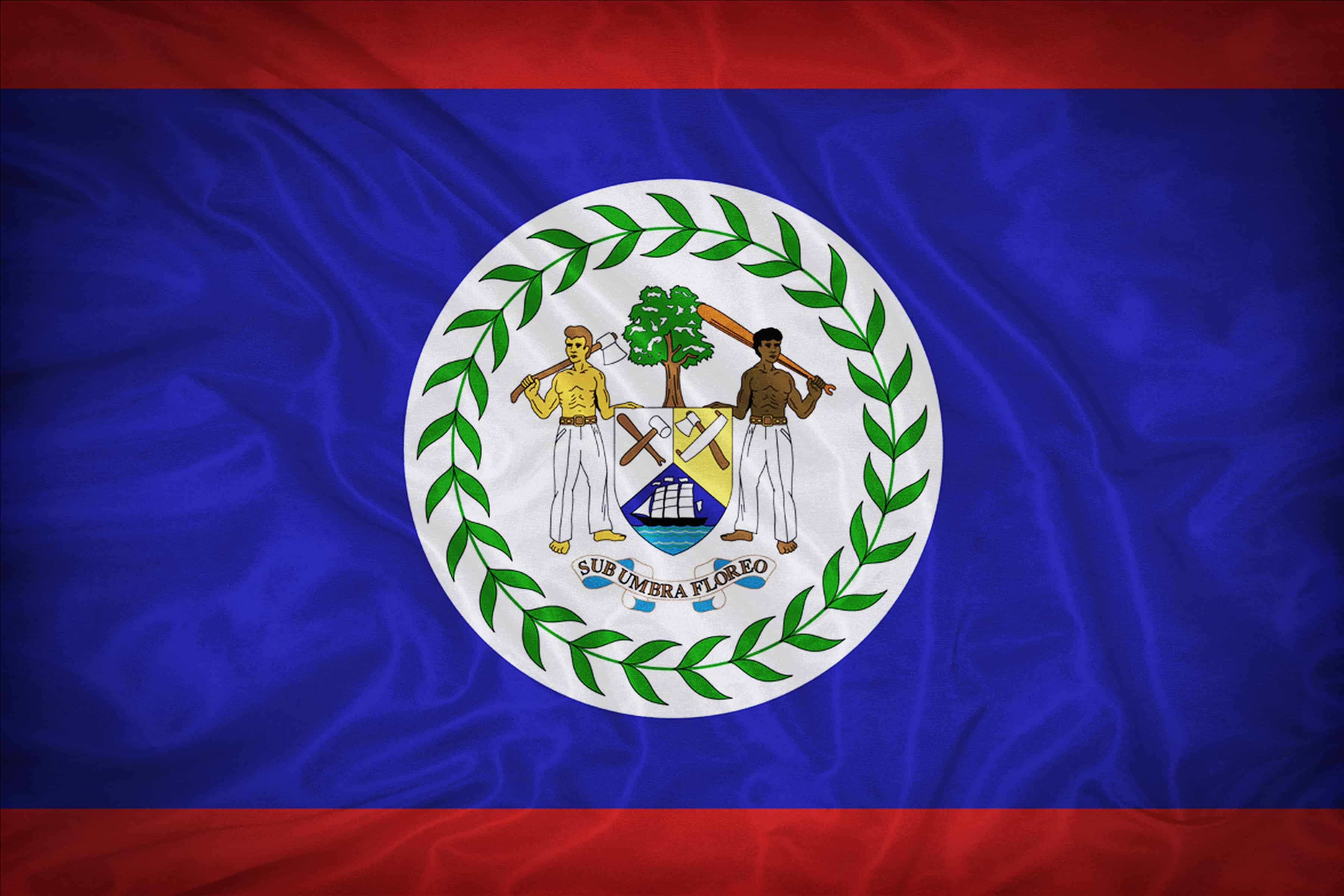Few understand how important it is for a nation to have a well-designed flag. Even though flags are usually made to show a country’s culture, geography, history, religion, and politics at the same time, the flag of Belize breaks with tradition by using a number of symbols that may or may not have anything to do with each other. Belize is a great example of a country with a lot of immigrants because it has a lot of languages and complicated social norms. Which core principle is symbolized on the flag of Belize? Simplicity. The American flag, with its stars and stripes, and the flag of Canada, with its lone maple leaf, are two examples.
Even though flags, anthems, and seals can all be seen at a glance, it takes some thought to fully understand the flag of Belize. Even though this flag is only a few square inches big, it shows a whole country’s heritage and cultural diversity. It is a symbol of national identity and a window into the country’s rich history. In this article, we will talk about the flag of Belize in detail, including its history, meaning, and symbols.
Flag of Belize History

The flag of Belize is also referred to as “The Flag of Unity.”
©Peruvian Art/Shutterstock.com
An alternative national flag was used beginning in 1950. The coat of arms was depicted on a white disc in the center of a blue field. Once the country gained its independence in 1981, a competition was held to choose a new flag. The unofficial national flag of the People’s United Party was changed by putting a red border around it on all four sides. Before the design was approved, the red border was cut down to just the top and bottom. Everal Waight and Inez Sanchez, who work for the government, came up with the winning design, which is now called the “Flag of Unity.”
As of early 2019, there were no canonical specifications for the flag of Belize. Variations commonly altered the size and color of the flag, as well as the degree of differentiation between both men’s features. The National Celebrations Commission initiated a flag standardization process in 2019, with the backing of the PUP and the UDP. It was decided that the first day to fly the new flag standards would be September 1, 2019, which is Belize’s National Flag Day. Eventually, the standardized practices will be codified into law at the national level.
Flag of Belize Meaning
Design
The national coat of arms depicts a mestizo and a man of African ancestry holding an olive branch and a sword on a white disc, which is included on the blue flag. Several other national flags depict humans, however, only the flag of Belize displays humans prominently. The African American man has a paddle, and the Mestizo man has an ax. The axe represents Belize’s early days as a timber outpost, while the paddle emphasizes the coast’s significance. Rumor has it that the two are known to some as the “Yellow Man and Chocolate Man.”
Several nations’ flags feature bodily parts. Brunei’s flag has hands, and Uruguay and Argentina’s suns have faces. The flag’s top and bottom are red stripes. With 19 colors and hues, it is one of the most colorful national flags. Early immigrants prized mahogany, which separates them. The tree has a three-part shield. The first, second, and third parts show sailing ships, axes, and crosscut saws used by loggers, and mallets and paddles used by fishermen and farmers. Twenty-five unknown green leaves surround the coat of arms.
Colors
Belize’s two major political parties, the People’s United Party (PUP) and the Unified Democratic Party (Belize), are represented by the flag’s colors (UDP). The PUP’s official colors are blue and white, so the newly founded UDP in 1973 had a problem with the original design employing those colors. During the American Revolution, two red stripes were added to the original design. In 1907, heraldry was authorized. The opposition party’s red was added as stripes. The 50 leaves reflect the PUP’s 1950 election.
The flag’s field is royal blue, with one red horizontal stripe at the hoist and another at the fly. The flag’s canton features Belize’s coat of arms, modeled after British troops. “Under the Shade, I Flourish” is the country’s coat of arms.
The flag’s red, white, and blue colors came from Belize’s two biggest political parties before independence, the People’s United Party (PUP) and the United Democratic Party (UDP). Before Belize’s independence on September 21, 1981, a national flag contest was organized. The UDP suggested red stripes and the PUP blue and white.
Flag of Belize Symbolism

The flag of Belize was officially approved in 1981.
©railway fx/Shutterstock.com
Independence Day in Belize was September 21, 1981, and that’s also the day the Belizean flag was officially approved. The blue background has two vertical red stripes at the top and bottom, which are home to the coat of arms. On January 28, 1907, British Honduras was granted a coat of arms, which would later serve as the basis for the badge shown on British ensigns. The British came to the area because of the timber business, which is remembered on the coat of arms. Symbols of this profession include figurines, equipment, and mahogany trees. In the lower portion of the coat of arms is the national motto, Sub Umbra Floreo, which translates to “Under the Shadow I Flourish.”
British Honduras adopted its coat of arms in 1819, which was later modified. The shield, supporters, and mahogany tree symbolized the region’s abundant natural resources. One mestizo and one mulatto supporter replaced the two African-looking ones (or “Creole,” as the term is understood in Belize). An ax and paddle for river log transport are in their hands. The shield has three sections: a ship on the blue section, a paddle and maul on the white section, and a crossed two-handed saw and ax on the dark yellow section. The Latin motto “Sub umbra floreo” (“I flourish in the shade”) was chosen because the area was formed as a British colony.
Thank you for reading! Have some feedback for us? Contact the AZ Animals editorial team.








